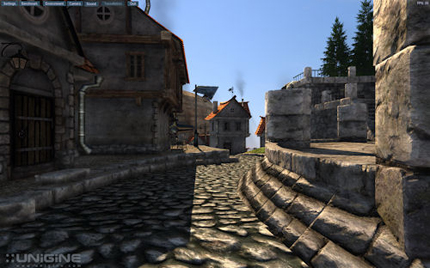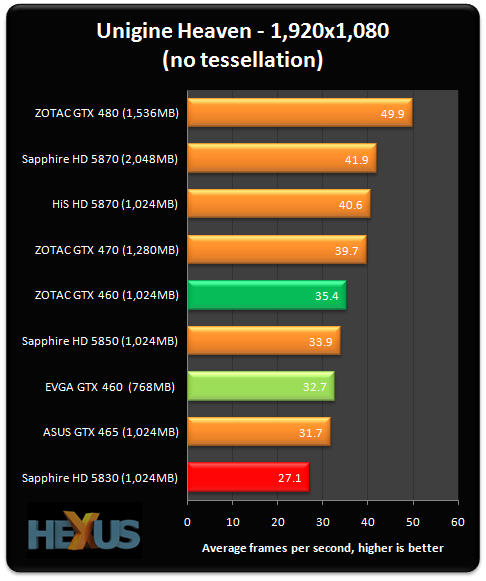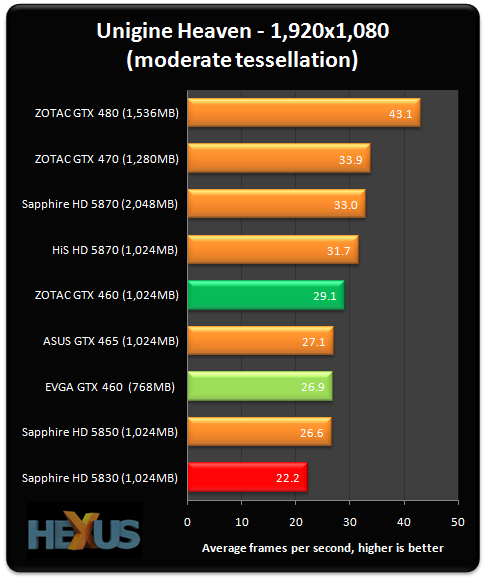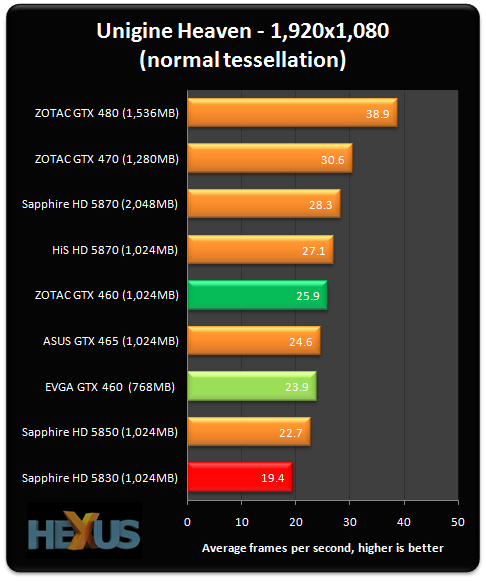Unigine Heaven 2.1
Hardware-based tessellation is a cornerstone of DirectX 11. The ability to efficiently generate massive geometry and then to apply what's known as a displacement map makes it a tasty technique for adding complexity and detail to a scene without a huge computational cost.
Unigine's Heaven 2.1 benchmark tests the ability of DX11 GPUs to provide varying levels of tessellation and extra in-benchmark detail.
Here's the standard benchmark run at 1,920x1,080 with 4x AA and 16x AF. Hover your mouse over the picture to see the difference between no tessellation and moderate tessellation.

We ran the DX11 cards through the benchmark/tessellation test at all four settings; disabled, moderate, normal and extreme.




Tessellation is one area where the GeForce GTX 460s shouldn't do as well as the GF100-based counterparts due to the PolyMorph engines being limited to just seven.
But the higher clocks of the GTX 460s largely overcome the deficit, and the 1,024MB card only falls behind the GTX 465 when 'extreme' tessellation is enabled.
The benchmark runs better on NVIDIA hardware, evinced by the GTX 460 768MB beating a Radeon HD 5870 1,024MB card at the highest setting.









